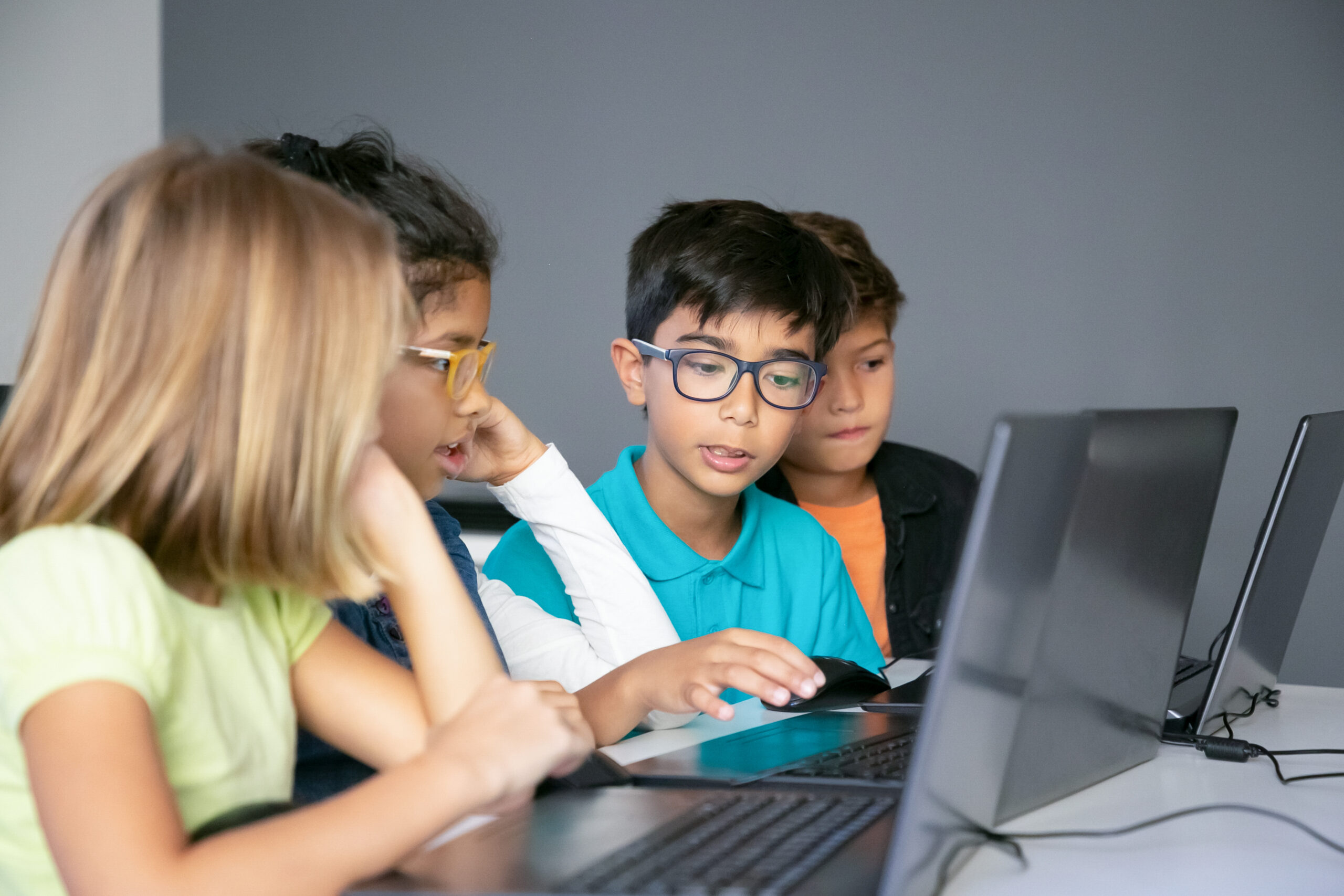In a world that is increasingly connected through internet usage, it is crucial that governments develop and maintain policies to protect children from the harmful information readily available online. It is, however, just as important to do this in a way that does not prevent access to useful knowledge that can be gained from using online resources. By looking at policies proposed and implemented in the United States, the European Union (EU), and the African Union (AU), we can better understand the driving forces behind these policies and what still needs to be done to protect future generations in a digital world.
“In the United States, 2 out of every 3 children sold for sex are trafficked online.”[1] To combat this, the United States implemented the Children’s Internet Protection Act (CIPA), which passed in December of 2000.[2] CIPA requires schools and public libraries maintain protection measures that “block or filter Internet access to pictures that are: (a)obscene; (b)child pornography; or (c) harmful to minors”.[3] While the legislature’s intent in passing CIPA was to protect children from harmful content, it has also been used to censor content individual school districts deem undesirable. For example, in Parents, Families, and Friends of Lesbians and Gays Inc. v. Camdenton R-III School District[4] the district was filtering out positive LGBTQ+ content that does not fall under the intention of CIPA.[5]
Similar to the United States, the EU has recently enacted legislation protecting children from potential dangers on the internet. For example, the EU implemented their own internet protection strategy for children under the name Better Internet for Kids [BIK+] (originally implemented in 2012)[6]. BIK+ emphasizes the importance of the internet in learning and development today and that this importance must be taken into consideration when applying measures to ensure children are protected from harm.[7] The BIK+ also make the statement that “children and youth are not a single, homogeneous group, they differ by age, gender, evolving capacities and social and economic background.”[8] The BIK+ was recently updated, in 2022, in order to become more accommodating to modern internet practices—an update the present 1998 United States statute needs.[9] Thus the EU has made the digital safety of their children a priority while still being able to encourage the use of the internet for educational purposes.
Unlike the USA and the EU, the AU currently does not have policy implemented regarding children safeguards on the internet; however, policy is currently being discussed. The African Committee of Experts on the Rights and Welfare of the Child (ACERWC) met regarding the topic of The Rights of the Child in the Digital Environment this year.[10] “Agenda 2040 calls upon Member States to ensure that, by 2040, schools provide universal access to affordable ICT devices, content and connectivity, and integrate these into teaching and curricula; and that no child is exposed to sexual exploitation and used for child pornography.”[11] Through this declaration, ACERWC acknowledged the importance of safe internet access for children, and addressed ways in which they plan to improve existing policy and education on the topic.[12] The AU currently lacks information regarding safe online practices,[13] and this issue was addressed “in 2019 [when the] African Commission on Human and Peoples’ Rights adopted the Declaration of Principles on Freedom of Expression and Access to Information in Africa.”[14] This Declaration “calls upon States to adopt laws, policies, and other measures to promote affordable access to the internet for children that equips then with digital literacy skills for online education and safety…”, as well as other protections from potentially dangerous content.[15] This declaration focuses on similar topics addressed by the United States and EU in their stipulations and, while the AU has yet to implement the stipulations in domestic legislation, the fact that the conversation is being had is a step in the right direction. The recommended policy changes highlight the educational value of the internet and focus more so on the safety associated with the internet instead of overall censorship of certain topics. While these policy changes are major improvements, experts agree that “more work must be done so that [online safety provisions] are defined comprehensively using appropriate terminology.” [16]
Child internet safety is a topic at the forefront of current technology policy implementation globally. With “a third of all internet users in the world being children”[17] it is easy to see why this is an important global issue. When developing future policy meant to protect children from harmful online content and predators, we as a society must be mindful to ensure that policy meant to protect doesn’t simultaneously prohibit access to educational material.
[1] Michael J. Kelly & David Satola, Internet Human Rights, 26 U. Pa. J.L. & Soc. Change 255, 274 (2023).
[2] See 20 U.S.C. §7131.
[3] Id. at (A)(1).
[4] See Parents, Families, and Friends of Lesbians and Gays Inc. v. Camdenton R-III School District, 853 F.Supp.2d 888, 890-94 (W.D. Mo. 2012).
[5] Id.
[6] A Digital Decade for Children and Youth: The New European Strategy for a Better Internet for Kids (BIK+), COM (2022) 212 final (Nov. 5, 2022).
[7] See id.
[8] Id. at 1.
[9] See id.
[10] See Day of the African Child 2023: The Rights of the Child in the Digital Environment, Afr. Comm. of Experts on Rts. & Welfare of Child (2023), https://www.acerwc.africa/sites/default/files/2023-02/DAC%20CONCEPT%20NOTE%202023_EN.pdf.
[11] Id. at 6 §13.
[12] See id.
[13] See Rogers Twesigye, et al., Online Risk and Harm for Children in Eastern and Southern Africa, UNICEF Innocenti- Glob. Office of Rsch. & Foresight 10 (June 2023).
[14] Day of the African Child 2023, supra note 10, at 7 §19.
[15] Id.
[16] Twesigye, supra note 13, at 13.
[17] Day of the African Child 2023, supra note 10, at 2.


